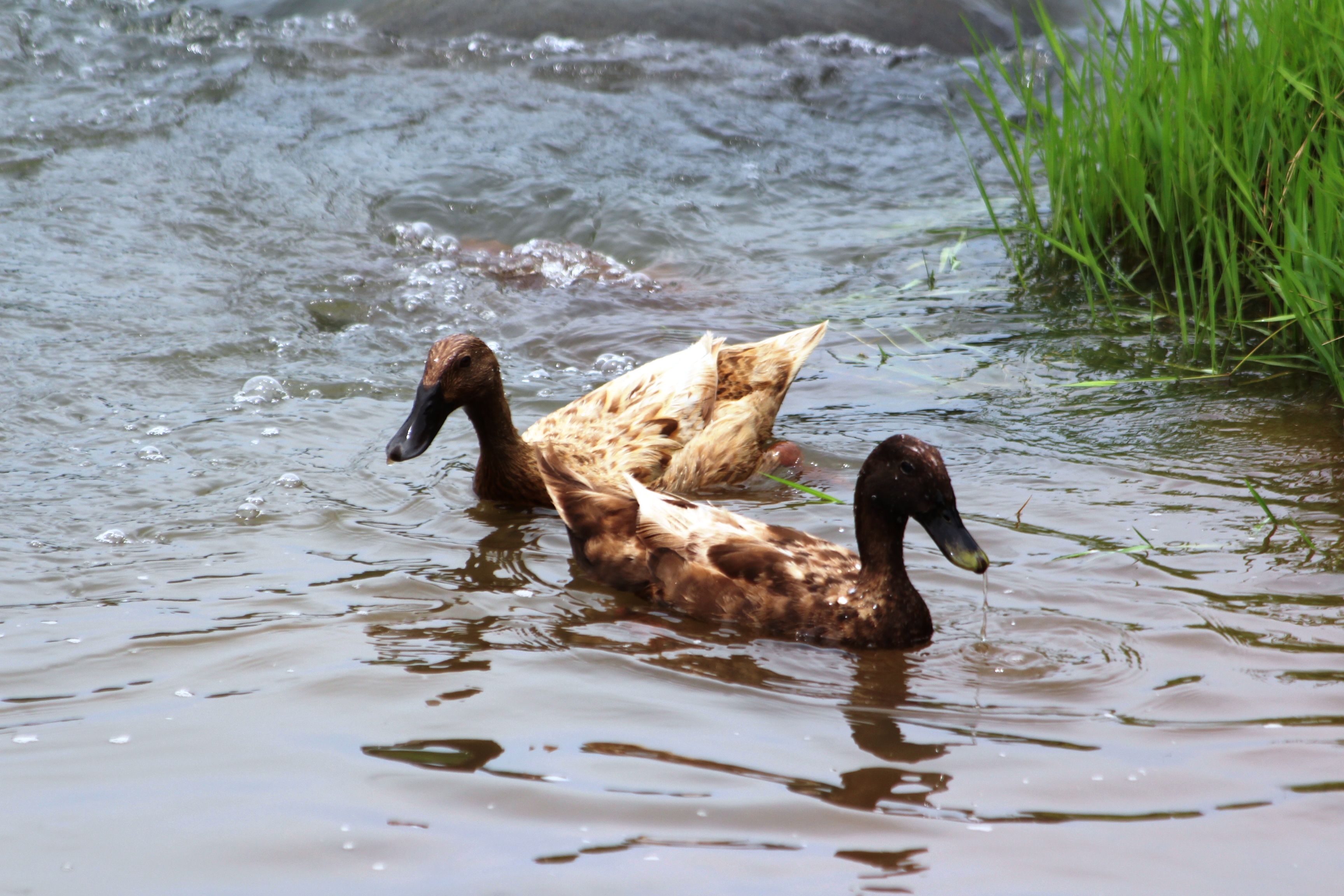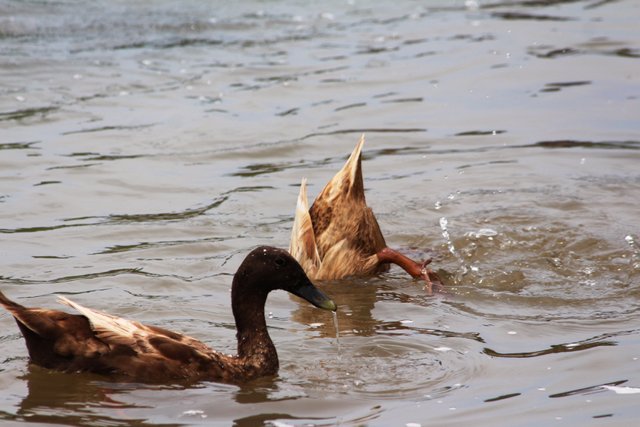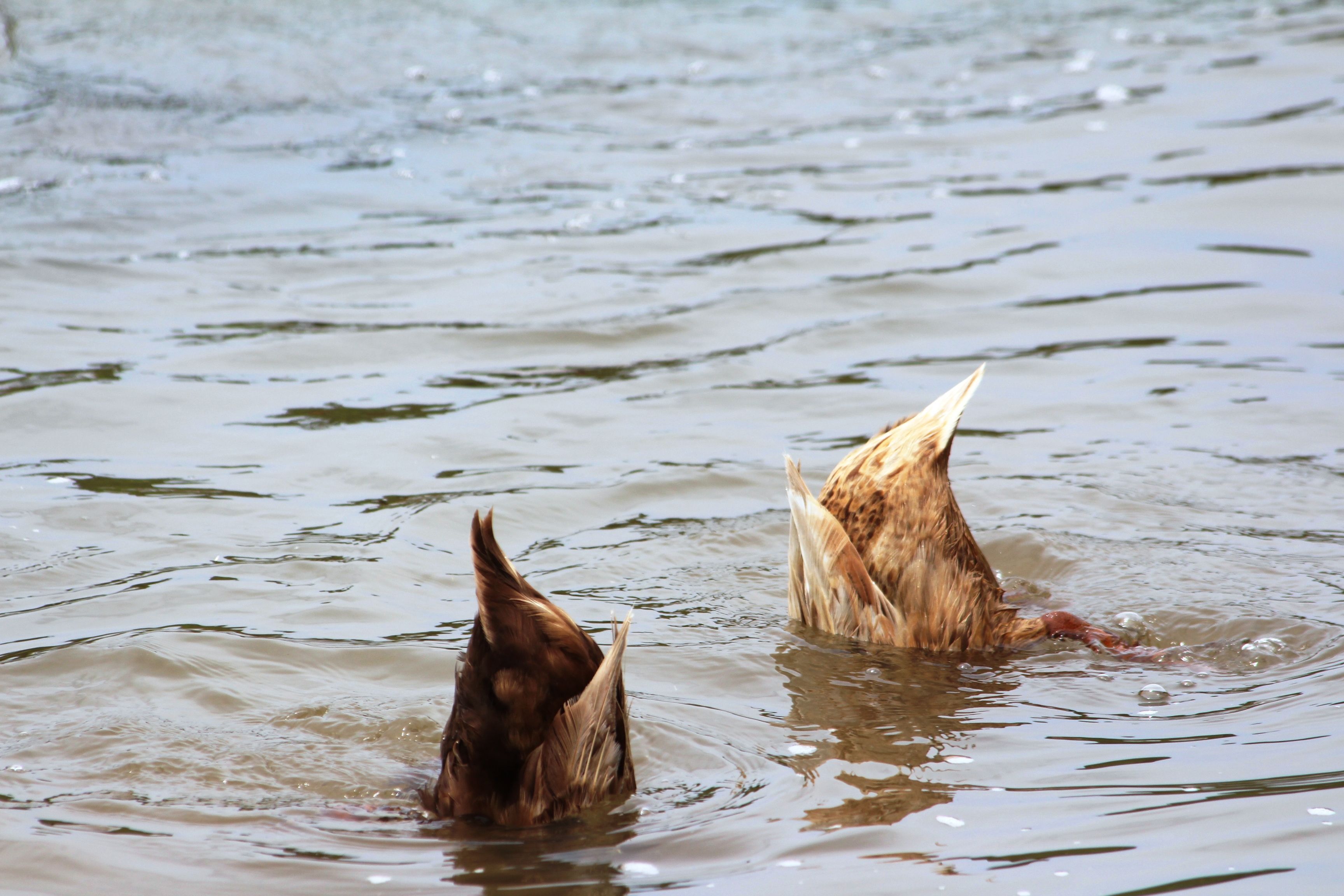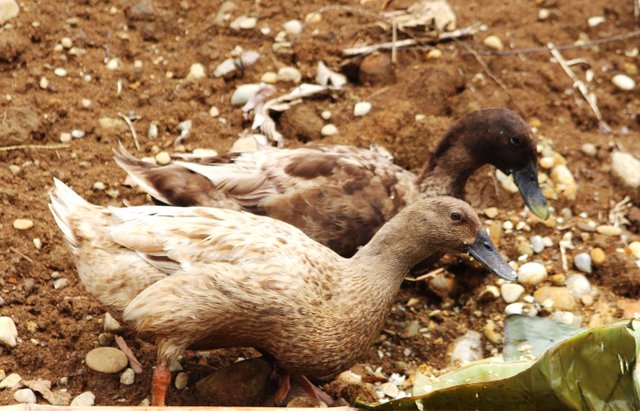Animal Sunday - Duck on the Banks
Good afternoon the stemians, These are photos of ducks who are looking for food on the banks of the river, the duck with his partner occasionally swooping his head to the bottom of the river to mendapakan food both worms and small fish ....

Duck or Duck is the common name for several bird species in the Anatidae family. Ducks are mostly aquatic birds that are mostly smaller in size than their relatives, geese and short-necked swans, and can be found in both fresh and marine waters.
Ducks are sometimes likened to some water birds that are distantly related but similar in appearance, such as loons, grebes, gallinules, and coots.
Some types of ducks can also crossbreed, but produce a sterile offspring and can not have offspring. Such a cross between serati and runner duck can produce sterile offspring, brati and tiktok.
As for this is the Criterion of the duck and how to maintain his life:
1. Appearance
Overall the duck's body is curvy and wide, and has a relatively long neck, though not as long as a goose and a short-necked goose. Duck body shape varies and generally rounded. Its beak is wide and contains lamellae which is useful as a food filter. In fish catch species, the beak is longer and stronger. Its scaly legs are strong and well formed, and are generally well behind the body, which is common in aquatic birds. The wings are very strong and generally short. The duck flight requires sustained fights that require strong wing muscles. Three species of duck steamer can not fly.
Male ducks from species in the Northern Hemisphere sometimes have attractive feather colors. Species from the southern hemisphere do not show sexual dimorphism except Paradise Shelduck in New Zealand whose female duck color is brighter than male ducks. The color of the young duck, whether male or female, is generally more like an adult female duck.
2. Food
Ducks eat a variety of foods, such as grass, water plants, fish, insects, small amphibians, worms, and small molluscs. Duck divers and sea duck looking for food in the depths of the water. To facilitate them in diving, both types of ducks have a larger mass so they are more difficult to fly.
Ducks from Anatinae subfamily can not dive far. They only filter food from the waters they are able to reach. If they dive, they can not dive as far as the divers ducks. To facilitate filtration, they have a flat and wide beak and contain lamellae.
Some species such as smew, goosander, and merganser have the ability to swallow big fish.
3. The Breeding Process
Ducks are generally monogamous, though these bonds generally last only a year. Most ducks breed once a year and choose the conditions that are after (in the summer, spring, or rainy season).
4. Ecology
Ducks have a very wide spread and can be found in almost every region of the world except Antarctica. Some species inhabit subantartic areas in South Georgia and the Auckland Islands. Several species can inhabit the islands of the oceans such as Hawaii, New Zealand, and Kerguelen although these species are in danger or extinct.
Some species of ducks that breed in warm arctic regions during summer, are migratory species. Some species in Australia where rain occurs periodically, the ducks behave nomadically; looking for waters (lakes and ponds) formed after heavy rains.
Ducks are acceptable in densely populated areas. Their migration patterns have changed so that many species are settled even in winter.
5. Predator
Around the world, ducks have many predators. Young ducks are generally vulnerable because of their inability to fly. Young ducks generally fall prey to big fish such as pike, crocodile, and other water hunters, including fish-eating birds like herons. Duck nests are often robbed by land predators such as foxes or large birds such as eagles.
Adult ducks are fast pilots, but can be captured on water by aquatic predators. During flying, the ducks are generally safe but there are still threatening predators like humans and Falcon Peregrine who use their speed and power to catch ducks



This picture is my photo in North Aceh region, using Canon EOS 650D
#Animalsunday by @homeartpictures
Follow and Upvote Me @yansyah03